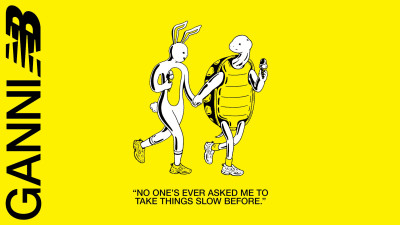Certification, standards and labels have long provided an effective mechanism for raising awareness around a range of sustainability issues – from deforestation and overfishing, to carbon reduction and energy efficiency.
Our Use of Eco-Labels Is Set to Soar – For Products, Brands ... and People?
Certification, standards and labels have long provided an effective mechanism for raising awareness around a range of sustainability issues – from deforestation and overfishing, to carbon reduction and energy efficiency. Standards such as Fairtrade, Forest Stewardship Council (FSC), Rainforest Alliance (RA) and Marine Stewardship Council (MSC) offer a useful framework to help organisations make the right decisions. With more and more businesses committing to obtain 100 percent of their commodity supply from certified sustainable sources, for example, they can be comfortable in the knowledge that trusted standards will make it clear as to what is expected of them if they want to become more sustainable, resilient and successful businesses.
And these mechanisms – which see more and more businesses working with social and environmental NGOs – have been replicated many times and used for decades, with relative success. The FSC has 850 members and has so far certified more than 190 million hectares of forests in 82 countries; RA claims to have 125 million acres of land under sustainable management and has helped to train 1.4m farmers in better agricultural techniques.
However, the use of standards and their associated labels has had its detractors, with many commentators bemoaning the fact that the creation of consumer-driven certified products and services has its limitations. Take the Roundtable on Sustainable Palm Oil (RSPO), for example, an organisation that has been in existence since 2004. In that time it has worked tirelessly to encourage companies to sign up to meet its set criteria of what it defines as best practice. Its 2,000+ members represent 40 percent of the global palm oil sector. And yet just 17 percent – 11.37 million tonnes – of the world’s palm oil is currently certified under the RSPO system.
A lack of confidence
Well, eco-labels are not going to go away. That is certainly the view of Jakob Zeuthen, the environmental director at the Chamber of Danish Commerce, and Lars Ludvigsen, a sustainable communications expert, who will present their findings of a new in-depth research project on the subject at Sustainable Brands ‘16 Copenhagen next week.
“Around 69 percent of Danes use labels as a buying parameter, according to the Confederation of Danish Enterprise,” Ludvigsen said in a recent interview. “That’s a figure that surprises us, but it’s clear that the number of labels will grow in use between now and 2030, according to our study.”
The pair have spent the last year studying a wide array of labelling and certification models currently impacting Danish brands – especially those in the personal care, food, clothes and homes categories – and are about to produce a book on their findings. The SB audience will be given an early insight into the results, which make for interesting reading.
According to Ecolabel Index, there are currently 463 labels being used in the world. That number could rise to 750 in the next 15 years, according to Ludvigsen, and their power and influence will be much greater than new legislation: “Legislation is rather slow to have the desired impact in solving sustainability issues,” he says. “Labels are better equipped to do that, especially when you have labels handling specific topics, rather than just covering everything. And that’s where we see there being the most growth by 2030, with labels addressing single-topic issues.”
A business opportunity
The study also suggests that labelling will be a “must” for the truly sustainable brands. However, Ludvigsen warns that smaller businesses may struggle to meet the criteria set out by the various standards. And there is also a suggestion that the so-called ‘megabrands’ will struggle to use labels for fear of somehow corrupting their own brand logo and identity.
“The megabrands would never allow an external label to be placed next to their beloved corporate logo. So they will continue to use storytelling and undocumented claims to show their progress on sustainability,” he says. “However, this does present a business opportunity for the small and medium-sized companies out there who we believe will be able to take the market because of their use of labels, which documents the fact that they are truly sustainable and producing environmentally sound products.
“The last to convert to labelling will be the megabrands, who are not the frontrunners in this.”
Personal labels?
With few schemes to effectively showcase company performance, such as ISO 140001 or achieving B Corporation status, there is certainly scope for more company-specific badges and labels to be developed, Ludvigsen says. But beyond the use of product and brand labelling, he also believes that individuals will even begin to label themselves in the future.
“The next step is consumers labelling themselves,” he asserts. “Perhaps it will be an app, so that individuals can look up or document their footprint and show how much harm they do to the world or how much good they do. This is a response to people wanting to be more responsible, beyond merely buying greener products. Imagine being able to measure the real impact of the products and services you are consuming – and putting that number into some sort of app which gives you a total number for your footprint.
“That’s something you may – or may not – want to communicate with your peers, on social media, or on a t-shirt perhaps.”
The court is still very much out as to the effectiveness of labelling in driving positive consumer behaviour. But as Ludvigsen and Zeuthen’s new study suggests, eco-labels are here to stay and it’s up to companies everywhere to work out how to get the most value from them in the meantime.
Related Stories
 MARKETING & COMMUNICATIONS
MARKETING & COMMUNICATIONS
Acumen Invites Chocolate Lovers to Make a ‘Cocoamitment’ This Valentine’s Day
 MARKETING & COMMUNICATIONS
MARKETING & COMMUNICATIONS
Playful Good Deeds: GRAMMA's Recipe for Effective Sustainability Marketing


.jpg)



